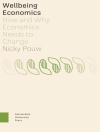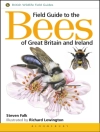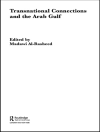Opening Acts provides new, rigorous ways to analyze communication and culture through performance. It offers cutting-edge readings of everyday life, space, history, and intersections of all three, using a critical performance-based approach.
Key Features:
- Familiarizes readers with the core elements and commitments of performance-based analysis
- Links performance-based analysis to theoretical and analytical perspectives in communication and cultural studies
- Provides engaging examples of how to use performance as a critical tool to open up communication and culture
- combines the best features of two classroom formats. Like a reader, it offers a menu of diverse approaches to performance-based analysis. Like a monograph, these approaches are organized into a coherent conceptual and pedagogical frame.
- Explicitly links developments in performance theory and methodology to current theories and methodologies in communication and cultural studies.
- Its topical organization mirrors those theoretical and methodological concerns most likely to engage students and scholars: how to analyze practices of everyday life, history, space, and intersections of all three.
Opening Acts works across the divisions of communication and cultural studies, including elements of interpersonal, organizational, and rhetorical communication, feminism, critical pedagogy, ethnography, and visual studies.
Tabela de Conteúdo
Introduction: Opening Opening Acts – Judith Hamera
Section 1: Engaging the Everyday
Introduction – Judith Hamera
1. Becoming Other-Wise: Conversational Performance and the Politics of Experience – Leonard Clyde Hawes
2. Telling Twisted Tales: Owning Place, Owning Culture in Ethnographic Research – Bryant Keith Alexander
Section 2: Animating Locations
Introduction – Judtih Hamera
3. Bridging Haunted Places: Performance and the Production of Mostar – Sonja Arsham Kuftinec
4. Looking for Stonewall′s Arm: Tourist Performance as Research Method – Michael S. Bowman
Section 3: Interrogating Histories
Introduction – Judith Hamera
5. Rethinking Elocution: The Trope of the Talking Book and Other Figures of Speech – Dwight Conquergood
6. Diverging Paths in Performance Genealogies – Ruth Laurion Bowman
Section 4: Synthesizing Scholarship
Introduction – Judith Hamera
7. The Mechanical Bride of Yonville-l′Abbaye (Batteries Not Included): Remapping the Canonical Landmark – Paul Edwards
Section 5: Embracing Performances
Introduction – Judith Hamera
8. Performing Theory/Embodied Writing – D. Soyini Madison
About the Editor
About the Contributors
Index
Sobre o autor
Judith Hamera received her B.A. (1980) in Mass Communication from Wayne State University and her M.A. (1982) and Ph.D. (1987) in Interpretation and Performance Studies respectively from Northwestern University. She is currently the Acting Associate Dean of the College of Arts and Letters, and Professor of Communication Studies and Theatre Arts and Dance at California State University, Los Angeles. She has served as Editor of Text and Performance Quarterly, the journal of the National Communication Association Division of Performance Studies. Her publications have appeared in Cultural Studies, TDR: The Drama Review, Modern Drama, Text and Performance Quarterly, Theatre Topics, and Women and Language. She is the recipient of the National Communication Association′s Lilla Heston Award for Outstanding Scholarship in Interpretation and Performance Studies, and was named President′s Distinguished Professor at California State University in 2004. She is coeditor, with D. Soyini Madison, of the SAGE Handbook of Performance Studies.












